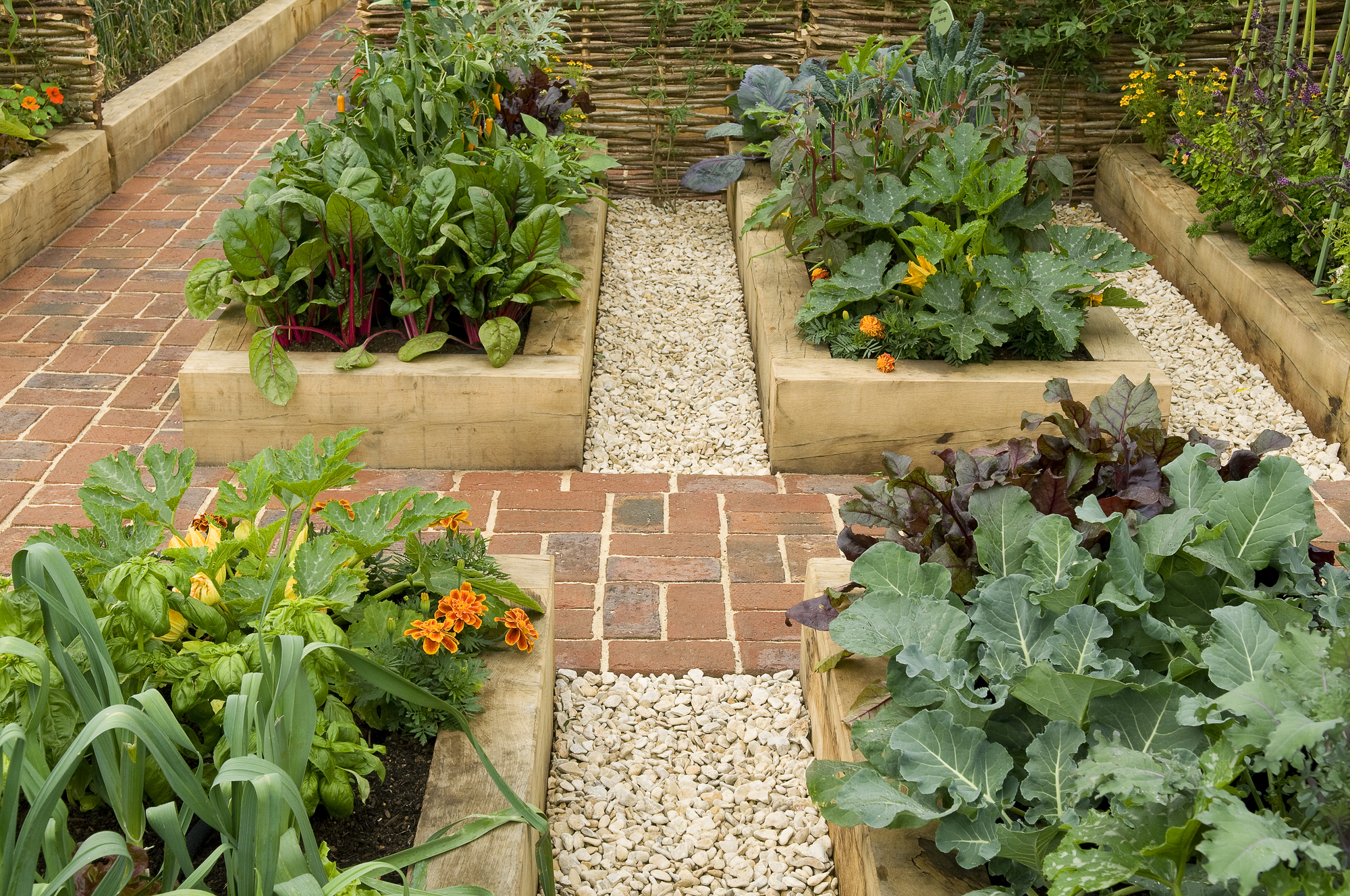
Winter is just around the corner, but many of us are already feeling the chill. Although you probably won’t be spending much time outdoors right now, that doesn’t mean your backyard doesn’t deserve a bit of attention. If you want beautiful blooms and a luscious lawn come spring, there are a few tasks you’ll need to carry out before that very first ground frost, as well as some general maintenance jobs, too.
Depending on where you live, the ship may have sailed already. For others, that first severe ground frost could be just a few weeks - or even days - away. Whatever the case may be, professional gardeners urge you to get these tasks completed before mid-December so you’re outdoor space is prepared for the colder weather. Here are ten backyard tasks to do before the frosty weather bites.
1. Protect tender plants

While some of your plants will be hardy enough to withstand the chillier weather, others will need an extra layer of protection this time of year. 'Consider covering delicate plants with frost blankets or moving them indoors,’ says Zahid Adnan, gardening expert at The Plant Bible. This process, known as overwintering, will ensure your perennials survive until spring.
Of course, your final move will be dependent on whether your plants are in containers or in garden beds. ‘Move potted plants indoors or into a greenhouse,’ says Tony O’Neill, founder of Simplify Gardening. ‘For in-ground plants, use mulch or horticultural fleece for protection. For outdoor plants, such as certain shrubs or young trees, consider installing burlap screens or windbreaks to protect against harsh winds and frost.’
Other plants might actually benefit from being transplanted outdoors before the real winter weather sets in. 'Hardy perennials, shrubs and trees deserve a chance to settle in before the big sleep,' notes Lina Cowley of Trimmed Roots. 'Transplant them now to better spots in your yard while they still have time to anchor roots before winter's shut-eye. Divide overgrown plants to share with friends too. But hurry - that ground will freeze sooner than you think!'
2. Cover outdoor furniture
Unless you’re seriously hardcore, your outdoor furniture won’t be getting much use over winter. Most materials will need to be covered or moved into a shed or garage to protect them and ensure their longevity for summers to come.
Besides storing your chairs or dining set, it’s also worth giving them a clean or appropriate treatment, depending on the type of material. ‘Wooden pieces might need oiling or painting to prevent rot, while metal furniture should be checked for rust and treated accordingly,’ says Tony.
‘Refresh tired pieces with a coat of stain, sealant, or weatherproof paint so they emerge renewed when spring entertains,’ adds Lina. ‘A simple makeover means your chairs, tables, and benches will be patio party-ready after their long winter's nap!'
3. Mulch flowerbeds and borders

'Add a fresh layer of mulch to tidy empty beds so they can sleep soundly, protected from harsh winter elements,' notes Lina. Not only will this keep your flower beds
warm and protect bulbs under the soil, but it will also tidy up the appearance of your garden more generally. 'Applying a layer of mulch also insulates plant roots and retains moisture,' says Zahid.
Lina also suggests scattering some seeds on top, too. ‘This will be a last feast so birds and squirrels don't go hungry when your garden slumbers,’ she notes.
4. Last minute lawn maintenance
Fall is a busy time for lawn care, and all your work should be completed by the first frost if possible. If you’ve ever tried to do any work on frozen grass, you’ll know that it’s virtually impossible, so now really is your final chance to finish these jobs to keep your lawn healthy during winter.
‘If you haven’t already, give the lawn a final mow and apply a winter fertilizer to promote healthy growth in the spring,’ suggests Zahid. Tony also notes that this is your last chance to aerate to improve drainage. ‘Once that’s done, apply a fall fertilizer to encourage root growth,’ he adds. ‘Also, it's the last chance to reseed any patchy areas.’
5. Clear clogged gutters

Besides the garden, the exterior of your home will need some attention before the extreme temperatures set in. It’s likely that fall leaves have found their way into your gutters, so be sure to check and clear them as necessary. It's easy to forget, but maintaining these exterior features of your property is a key job to get your backyard ready for spring.
'Leaf-filled rain gutters can wreak havoc once winter weather arrives,’ Lina explains. ‘Prevent ice dams and water damage by scheduling thorough cleanings and checks for cracks and holes. Don't let overflowing debris clog channels and spill over when spring rains arrive.’
6. Protect your pipes
Similarly, you’ll need to inspect your pipes to winterize your backyard, ensure they’re not damaged, and prevent them from freezing completely. ‘Frigid nights mean burst pipes and flooded basements if water equipment isn't protected,’ Lina says. ‘Avoid cracked hoses, leaky spigots, and damaged irrigation by storing them safely before temperatures plunge.’
This goes for other irrigation systems, too. 'You should drain and store hoses and irrigation systems to prevent freezing damage,’ Tony notes. Lina suggests protecting exterior faucets and spigots with foam covers. ‘A little preparation goes a long way to prevent cracked pipes and costly water damage when mercury dips below freezing,’ she says. ‘Take action now so Jack Frost keeps moving right along instead of invading your pipes!’
7. Clean your tools

You’ll need to keep your garden tools in check if you want them to perform properly once you get busy with your spring gardening. ‘This means cleaning, sharpening, and oiling your gardening tools now,’ says Tony. ‘Proper care extends their life and makes them ready for spring.’ It’s a good idea to store them away in a shed or garden room, too, so they aren’t damaged by the frost.
8. Prune perennials and clear debris
Most of your pruning will have been done during fall, but if there’s anything remaining then now’s the time to do it. ‘Bid your tired annuals a fond farewell before clearing spent plants to make way for spring,’ Lina says.
Certain perennials might also benefit from a trim, too. ‘Fallen leaves and dead plant material can harbor pests and diseases,’ Tony explains. ‘Clear them from beds, lawns, and ponds and compost what you can to recycle nutrients back into the garden. Cut back herbaceous perennials too, but leave some seed heads for winter interest and to provide food for birds.’ Just be sure to double-check that any perennials you’re pruning are okay to be trimmed back this time of year to avoid any common pruning mistakes.
9. Harvest any remaining vegetable crops

Your vegetable garden might not be bearing any crops right now, but make sure you’ve harvested anything remaining before frosts hit. ‘Even the most neglected veggies and herbs can have their moment to shine,’ says Lina. ‘Before Jack Frost nips them, harvest leftovers to stir into hearty autumn soups and stews. No green thumb needed - those sad tomatoes and wrinkly peppers will still add nutrients and rich flavor.’
It might be worth even giving bare vegetable plots a once over, too. ‘Adding compost or well-rotted manure now will also enrich the soil for spring planting,’ says Tony. If you have any wintering veggies growing, check to see if they need a layer of protection through the depths of winter.
10. Plant bulbs before it's too late
If you're wondering when to plant bulbs, most need to be planted before the first frost so make sure you put yours into the ground if you haven’t already. Spring blooming bulbs are a particular favorite for container gardening too, but they’ll need to be safely in the soil so they’re warm enough to sprout.
‘Plant bulbs like tulips, hyacinths, and daffodils now in pots and garden beds for a cheerful wake-up call after winter,’ Lina urges. ‘Don't wait until frost - their roots need time to establish in order for gorgeous blooms, so take action so spring flowers burst despite winter's weary reign!
If you want your backyard to be spring-ready come warmer weather, complete these tasks now to prevent any costly problems and to ensure a display of beautiful blooms in a few months’ time.







